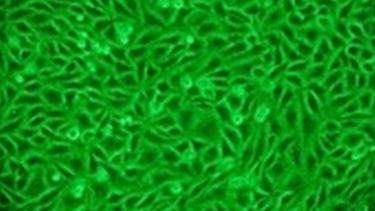Tissue Engineering & Regenerative Dentistry

Tissue regeneration
Tissue engineering and regenerative medicine represent a significant opportunity to create step-change in our approach to the treatment of disease, trauma and congenital defect. The Group is developing techniques that take small numbers of healthy cells from the patient and grow these in vitro into functional tissues such as bone and cartilage. These tissues can then either be re-implanted to repair or augment damaged or diseased tissues, or they can be used to generate a biofunctional extracellular matrix that has potent signalling capacity that may be used to stimulate tissue repair in the patient.
Functional 3D cell-supports and scaffolds
Scaffolds are three-dimensional supports that encourage the growth and development of replacement healthy tissue, and the integration of the new tissue with the body. In the early stages after surgery, scaffolds may also provide a useful mechanical replacement for the missing tissue, until the engineered and recovering local host tissues have developed and been fully integrated within the patient's body. Our Group is concerned with the development of scaffolds to increase the quality of the tissue that can be successfully engineered. The cells may grow to adopt the shape of the scaffold, so this feature can also be used to generate an implant tissue of the correct shape.
- More
-
In tissue engineering and regenerative medicine, “scaffolds” are typically three-dimensional (3D) fibre-based or porous structures that are designed to carry cells and/or therapeutically active molecules. These scaffolds may be used to culture cells in 3D for subsequent use as advanced in vitro models or implanted in a patient to encourage the regeneration of healthy, functional tissues. In the early stages after surgery, scaffolds may also provide a useful additional mechanical support for the lost or injured structures, until the recovering local host tissues have developed and been fully integrated within the patient's body. The Bioengineering & Health Technologies Group is concerned with the development of advanced scaffolds that contribute additional functionality or regenerative capacity.
The main tissues of interest where the Group are actively engaged in scaffold research are bone, cartilage, oral mucosa, and periodontal ligament. Craniofacial bone is of course vitally important for function and aesthetics in the head, neck and face, and this research has obvious implications for other specialties including orthopaedics. Scaffolds for bone are commonly based on bioceramics and composites, and we work extensively on the development of novel porous ceramic structures for bone tissue engineering. Cartilage tissue engineering scaffolds research is directed at both polymeric systems for articular hyaline cartilage, and ceramic or composite systems for hypertrophic cartilage. In periodontal ligament scaffold research, the main interest is in understanding the role of orientation and mechanical loading in fibre-based systems.
Our most recent projects involve the use of advanced manufacturing technologies to produce complex layered or even custom-shaped scaffolds with properties tailored for specific clinical applications. These will ultimately be suitable for use as regenerative medical devices that can be deployed to harness to the patient's own healing potential without the implantation of expanded autologous or other cells.
Complex in vitro models and culture techniques
Complex in vitro models developed using static culture or in bioreactors represent powerful new tools to investigate both disease processes and new therapeutic strategies. They can be used to examine the response of specialised human tissues to new biomaterials. Information on biocompatibility, toxicology and other biological phenomena can be obtained using these new models. For example, we have developed a complex in vitro oral mucosa model to analyse the effect of oral pharmaceuticals and dental materials on the mouth. We are also working with innovative companies on the translation of this research from the laboratory bench to standardised test methods for industry.
